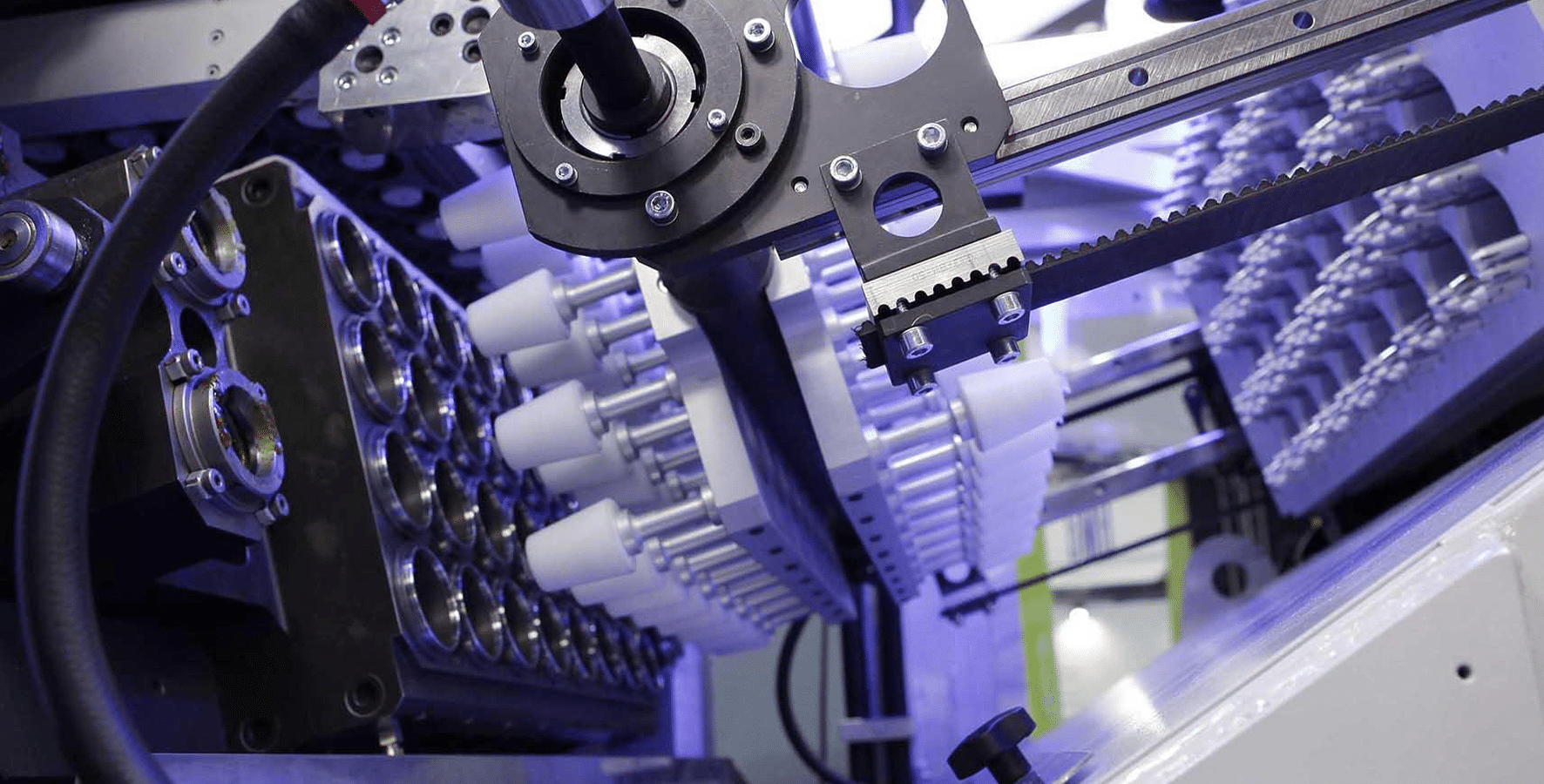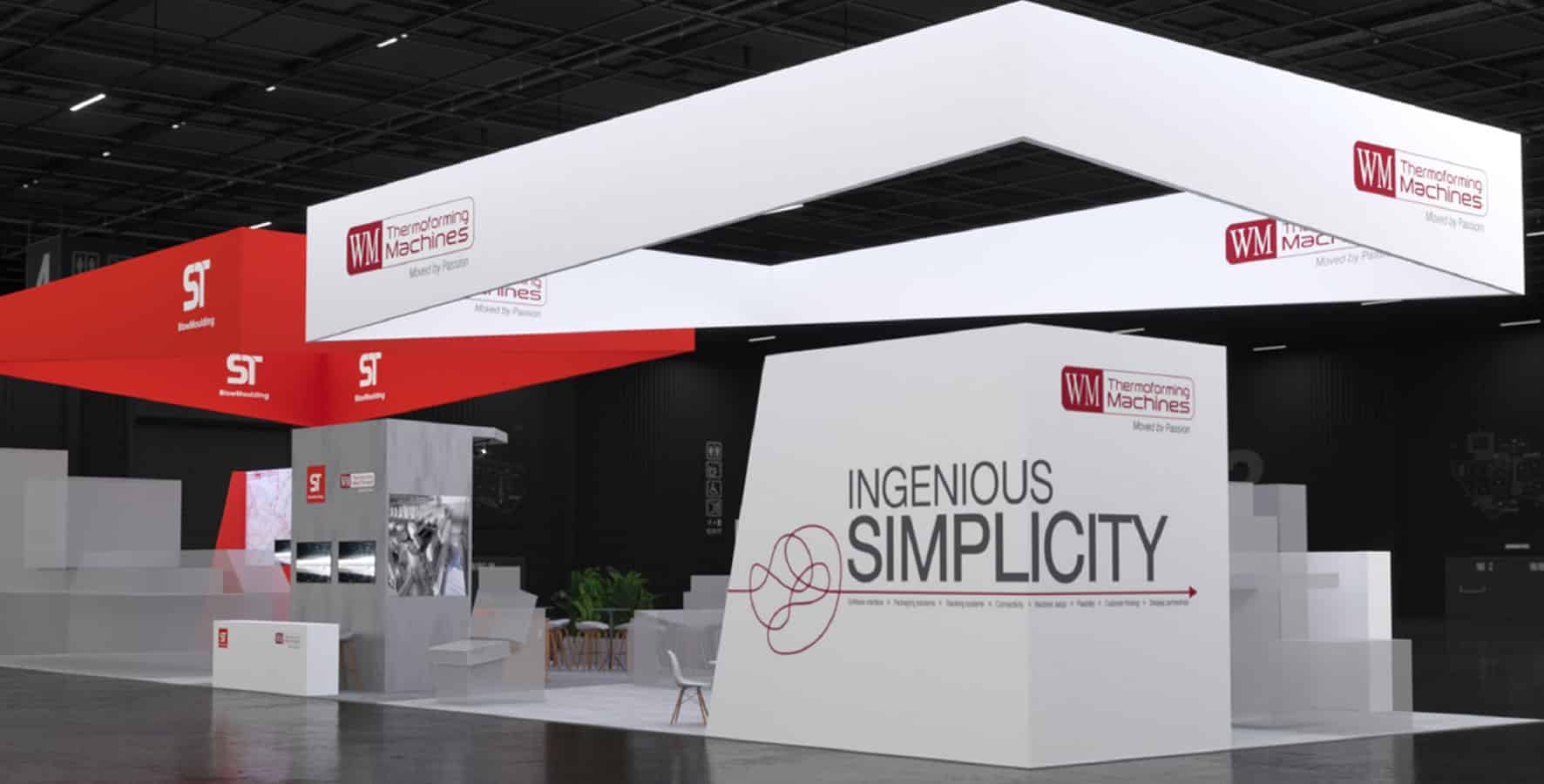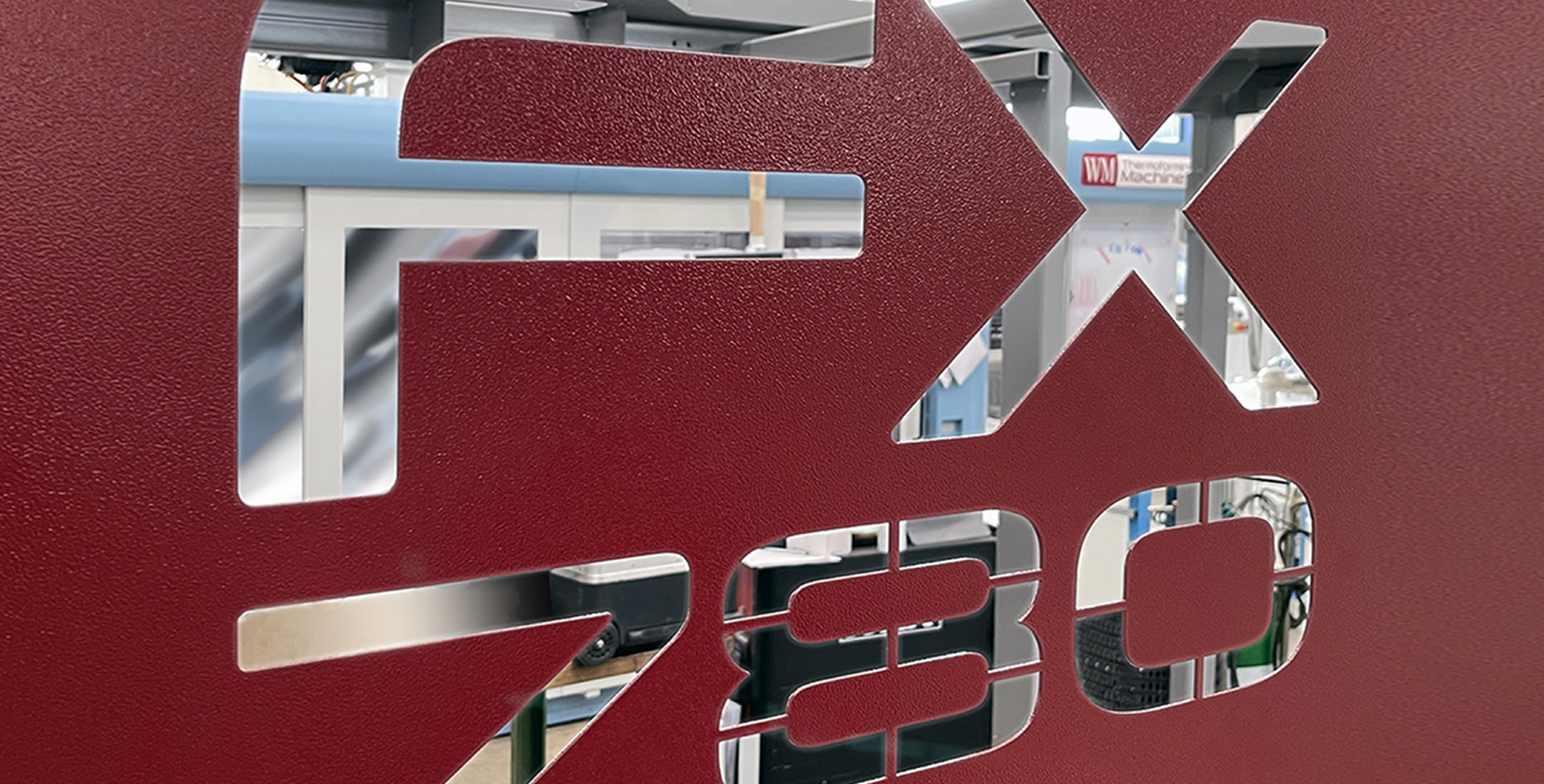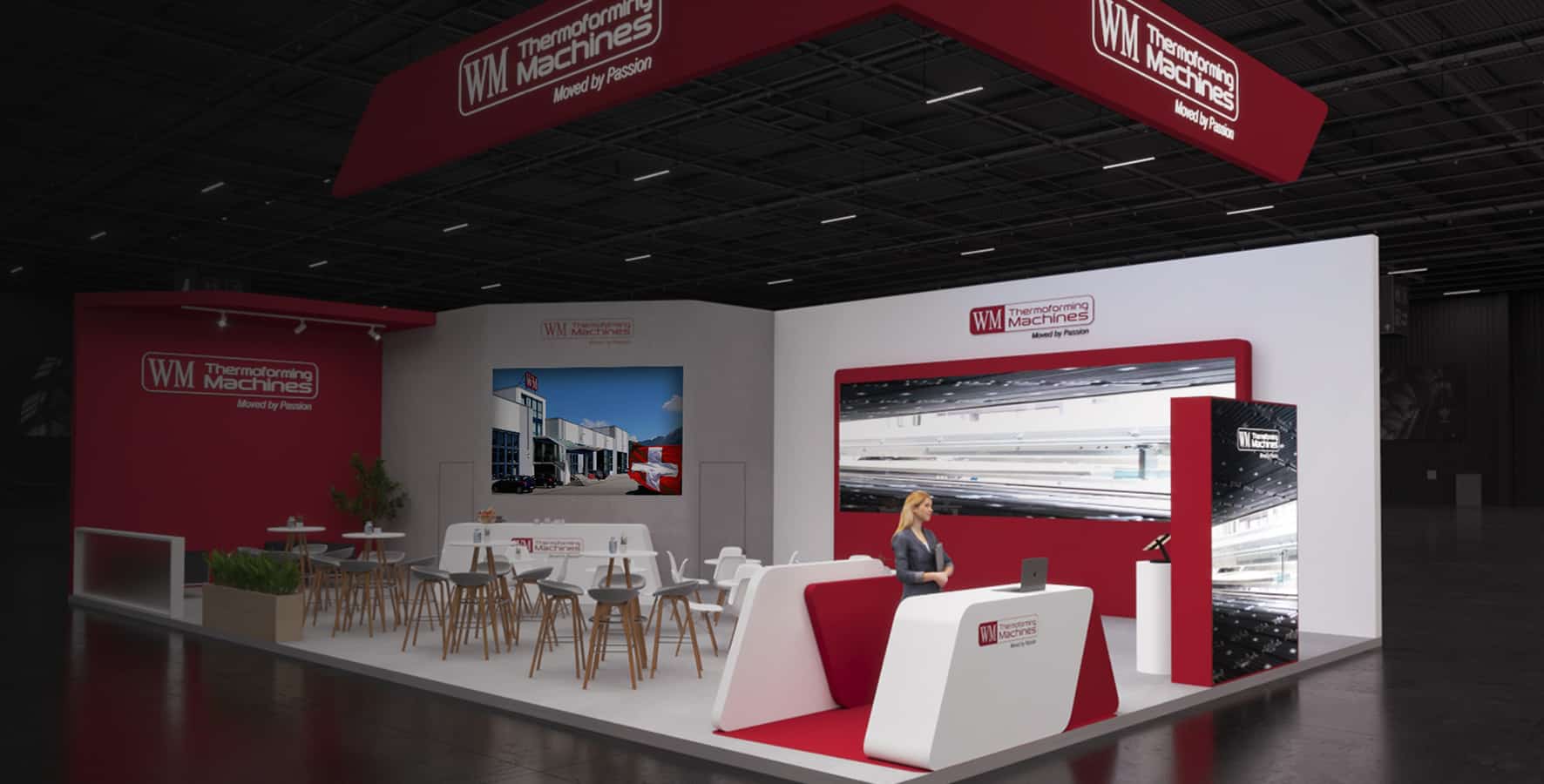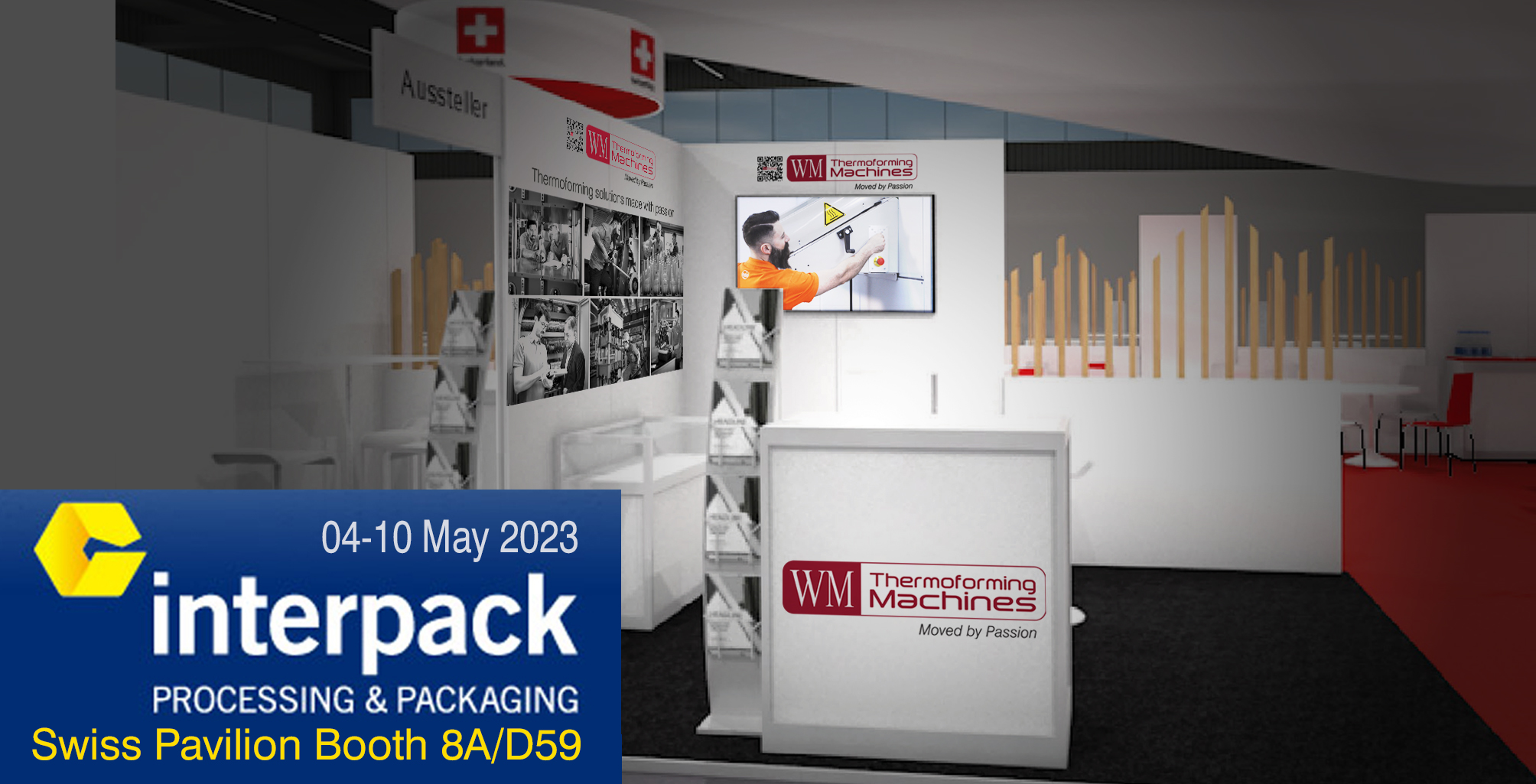When analysing an item to be thermoformed with punch and die moulds, one aspect that must always be carefully evaluated is stacking the pieces once they have been formed and ejected from the mould.
Today’s thermoformed containers present also complex shapes with squared or hexagonal bottoms. It is more and more frequent to find items that do not fit the conventional conical trunk shape typical of cups and yoghurt cups.
There are also items that require the type of handling that does not subject the pieces to stressful mechanical actions that would end up degrading the product’s aesthetic appearance or could alter its mechanical features, thus causing an increase in production waste.
Thermoforming machines with tilting platen have certainly greatly simplified the piece stacking phase, making the managing of this final processing phase much more reliable. In fact, the rotation of the lower half mould is the perfect solution to present the products, regardless of the number of impression rows, in a stable and repetitive configuration for whichever type of following operation.
As already said, for the classic disposable cup in HIPS or PP, the easiest system remains the stacking through aspiration and blowing in curved chutes that stack the pieces ejected from the mould and forms pre-counted piles which are then placed on the conveyor belt to be sent in a continuous single queue to the subsequent rimming or packaging operation.
However, this system cannot be absolutely used for items with square or rectangular shapes or when the height of the piece is less than its diameter (the piece would roll in the chute). Moreover, for cups made from crystal polystyrene for example, the mechanical friction between the cup and the chute during the stacking process would surely degrade the aesthetic appearance on the transparent sides of the cup.
For this reason, an alternative system must be arranged.
WM Wrapping Machinery SA has developed a rotating plate stacker that allows the pieces ejected from the half mould to be received on a plate with suction spindles.
A system, synchronised with the thermoforming machine cycle, positions the receiving spindles near the half mould during ejection and extracts the pieces via suction/vacuum, keeping them firmly attached to the spindles. Once the mould has been freed, the lower forming platen will complete the return rotation and, with a vertical movement, reposition for the next simultaneous forming and cutting cycle of the pieces thus formed.
The receiving spindles are shaped so as to imitate the inner shape of the piece to be stacked, be it cup, tray or any other shape.
The spindle holding plate then completes a 180° rotation, dropping the moulded product into collection chutes located inside a stacking frame. Once the number of pre-set cycles has been completed, the different stack levels are transferred, one level at a time, onto a horizontal evacuation belt which sends the pieces in a single queue to all the subsequent packaging operations.
The system can be equipped with a double receiving plate, making it possible to increase stacking speed (compatible with the thermoforming machine speed if necessary). This reduces waiting time for the rotating plate which, while dropping the moulded product into the drum’s collection chutes, can already present another series of spindles to extract the pieces from the half mould.
Since, as mentioned, the spindles extract each piece individually, there are no limitations regarding piece shape. In fact, even when dealing with anomalous or polyhedral shapes, the pieces will always and in any case be constantly stacked in the same position without lags phases due to rolling.
System movement is through four servo-motors 0.9 kW each, which therefore do not weigh heavily on the total calculation of installed power and absorption of the entire system.
Two motors guarantee perfect receiving plate movement, a third handles the 180 degree rotation of the said plate, while the fourth motor controls the vertical movement of the piece collection frame.
This stacking unit has already been widely tested and is currently used from different customers. We can therefore conclude by saying that the solutions used have proven very valid both in terms of efficiency and reliability.



